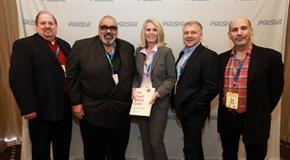Features
Pollstar Live! Essential Promoter’s Survival Guide
The stage collapse that killed seven people and injured dozens more at the Indiana State Fair in August 2011 will always stand as a dark moment in the concert world, but the tragedy also served as a wake-up call and ignited a push for safer standards.
Leaders in the industry have used the time since the incident to formulate best practices and, just last fall, released the Event Safety Guide – the United States’ first published safety text directed specifically at the live event industry.
At the heart of the guide is the notion that there’s nothing more important than keeping patrons, performers and staff safe, Red Light Management’s Stuart Ross said.
And because safety for all parties is the goal, the industry has been forced to take a look at its role in promoting unsafe conduct when it comes to concert production.

“Through our inaction in producing shows to make sure things are being done correctly and are correctly inspected, we are enabling bad behavior,” Event Safety Alliance’s Jim Digby said. “We are allowing things like Indiana to happen because we’re not stepping up and following the best practices that are out there in the industry.”
Digby recalled a story from a lighting designer friend who saw a rigger up in the truss without a harness on, alerted the production manager for the show, and was met with the response, “So what?”
“That’s the enabling of bad behavior,” he said. “That’s the thing that has to change. This is a paradigm shift and a cultural change in the way we do business.”
To that end, the ESA has formed relationships with OSHA to create event-specific training and is working in conjunction with Fireman’s Fund Insurance Company to develop new guidelines for insurance underwriters.
The fund is tasked with insuring productions for the safety of all involved and by coordinating with the ESA, expects underwriting guidelines, prices and availabilities to change, Fireman’s Fund’s Lauren Bailey explained.
“Some of those events that may be difficult to get insurance for, if you can check the boxes and give us a greater sense of what is being done to make sure that the safety is being followed, that’s going to drive a different price around the insurance,” she said. “Ultimately it will benefit the bottom line.”
There will always be producers that cut corners and put safety at risk in order to offer the lowest bid and pad their bottom line, but to make the system more fair and reward those who are taking the right precautions, Digby suggested a star rating system on the production side.
There’s also a need for buy-in from others in the industry, Justabunchofroadies.com’s Charlie Hernandez noted, suggesting a clause on artists’ contracts under the responsibilities of the promoter, who will put the onus on the buyer to ensure they are producing a safe show.
“Ignorance of the law and the rules does not predicate innocence. We put all this information out there for the having,” he said. “The people that are buying the shows and are responsible for producing the shows, the people that are responsible for being the production and tour managers moving these things place to place must equate themselves to this information.”
In cases where accidents do happen, responding “‘No, this is how I’ve done it all my life,’ is not a defensible position to be in” when questioned on safety procedures, Hernandez said.
Weather is an area that may seem prone to accidents such as the wind gust that caused stage rigging to topple into the crowd at the 2011 Indiana State Fair, but Ross lauded weather prediction services as a way to monitor the threat to events on a micro level. Weather Decision Technologies’ David Vandenheuvel said his company produces a weather decision maker for the industry, and monitors lightning and wind sensitivity.
“With this service, it’s your exact latitude and longitude so you don’t get false warnings, you get reliable data,” Digby said. “This let you make intelligent, well-informed decisions by a professional meteorologist. If, god forbid, you have to go to a court and defend yourself or defend yourself to your insurance you can say, ‘I had the professionals looking after my weather.’”
Those in the industry also need to look out for each other, and panelists proposed the establishment of a peer-reviewed rating system to raise standards as well as a drive to get artists to endorse the use of the Event Safety Guide for their shows.
It also comes down to having the courage to confront a business manager or accountant who’s looking to save money but risking safety of the show, Hernandez added.
“We have to say, ‘Then I’m not involved, my team is not involved, and be aware by doing this you are complicit in enabling lower standards for your show.’ It has to start somewhere,” he said.
The Event Safety Guide is available for purchase at EventSafetyAlliance.org.